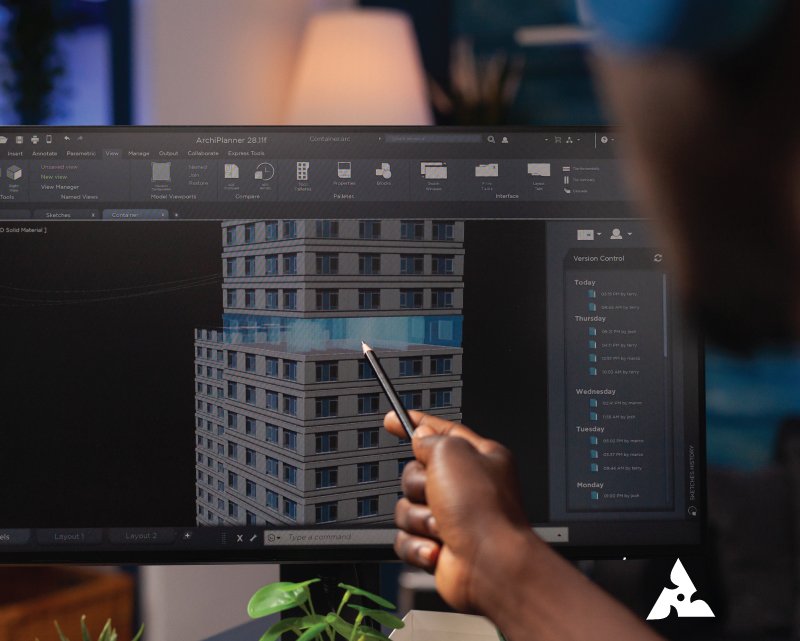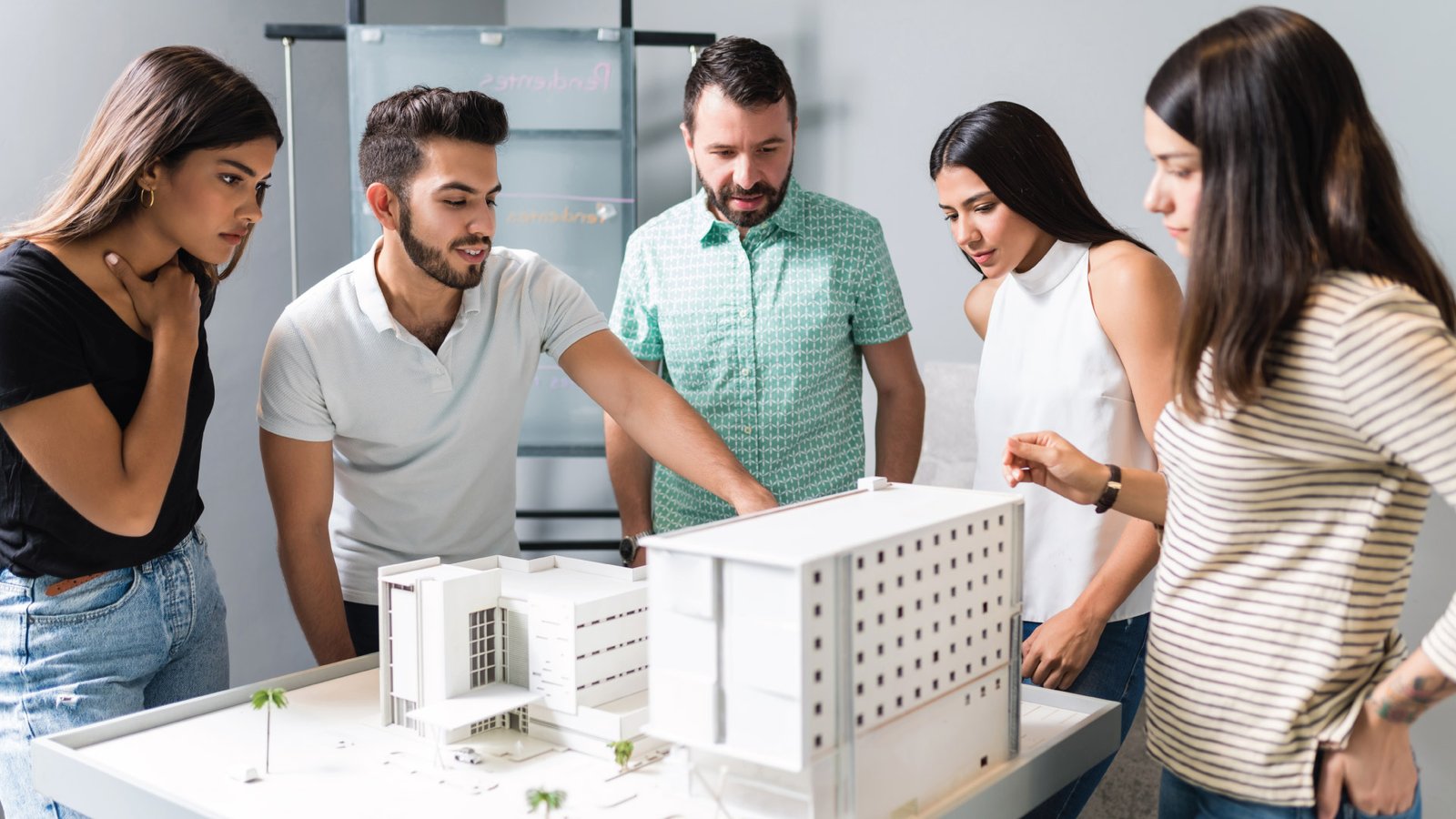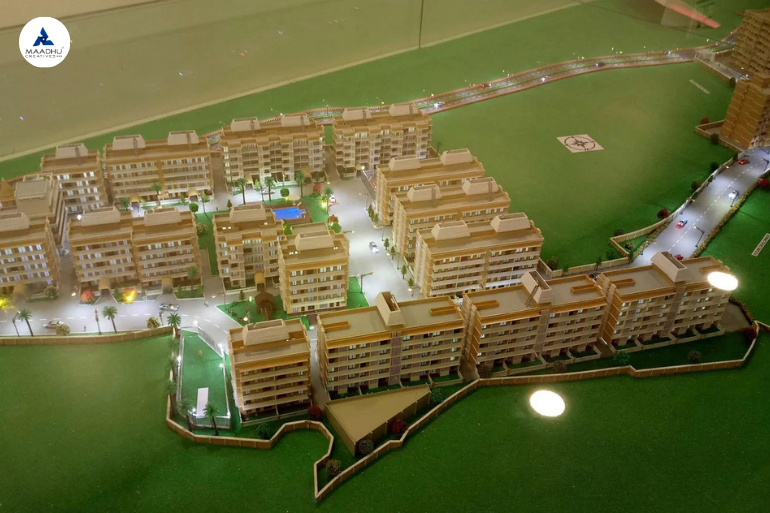How to Build a City Model: A Simple Guide
Table of Contents
Introduction
Models of cities that span across the entire city are very captivating due to their detailed nature and broad application. Whether you are a hobbyist who is designing a model of an existing city or a professional who uses such models for urban planning or education, these objects go beyond mere artwork. They make us understand how urban places actually operate and appear in a practical manner.
This guide will take you through an exciting journey of creating your own city model. We shall begin by providing tips on choosing a theme for your project, whether it is based on a real city or one created from scratch. Creating scale models involves various stages, starting from building up the layout to constructing intricate structures as well as putting final touches so that they look alive. Additionally, we will share ideas on how to preserve and put your exhibit together in harmony with other things displayed to ensure long-term survival of your work of art. Ultimately, you will gain all necessary skills that enable you to create amazing yet informative models at the level of an entire town.
1. Understanding City Scale Models
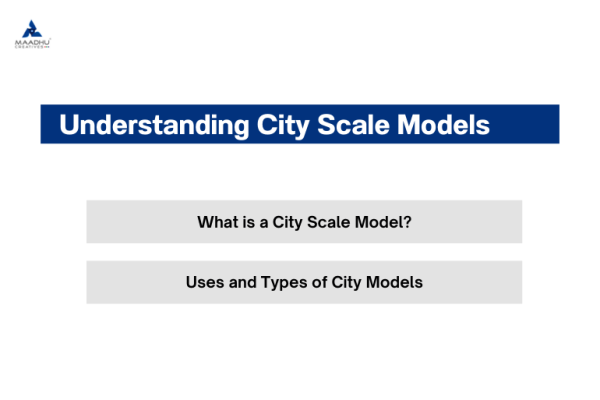
City fashion, or suburban fashion, is a unique and scaled-down city variation. Representing real or imagined city landscapes, they present houses, roads, and landscapes in ways that make it easy to understand complex city systems. So these styles are more than just decorations they play an important role in a variety of industries, from schools to urban planning.
What is a City Scale Model?
A metropolitan model is a three-dimensional model of a city, intended to represent its structure on a small scale. In the modeling process, scale refers to the relevance of the model parameters to the actual city. For example, a 1:1000 scale model means that one unit in the model is equivalent to 1000 units in real life. This scale helps to visualize and understand the layout and layout of the city without looking at the entire city at once.
Uses and Types of City Models
City models have the following uses. They assist learners in comprehending the concepts in urban planning together with the structures of cities. Models have cultural significance as frontline activity for model hobbyists involves construction of city models. City-scale models are employed by the professionals in the planning, visualization, and even testing of developmental projects within cities.
There are different classifications of city models. Real city models imitate the existing actual city, while on the other hand, fictional or historical city models give the impression of cities that are not physical, either of a fictional domain or in the past. Urban city models exclude a wide range of elements of architecture and design; they are used to demonstrate some phenomenon of a city, for example, its construction or division into sectors. From scale models of a city that are used in 3D city modeling to city planning models for professionals, such models are very useful in understanding the organization and functionality of cities.
2.Planning Your Model City
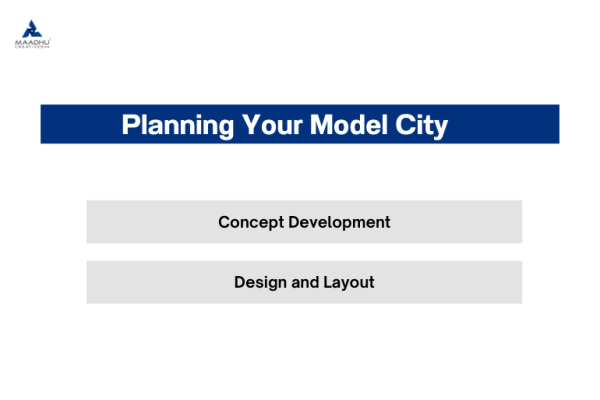
Creating a model city is a creative and fulfilling project of which Tacoma is an excellent example of a model city that incorporated creativity with accuracy. If you are doing this as an enthusiast or if you are planning to do that professionally then the planning stage is the most important part of converting your idea into a well-founded model. Below is a rather basic set of steps that might be of use to you.
Concept Development
First of all, choose the subject or the city you wish to replicate in your paperwork. You might decide to create a mimetic city based on an actual city that interests you or you might just come up with a city that has never existed in your mind. To be more specific, it may be an imaginary city of the future, a city of the distant past, the past century, today or even the week end. Since it is up to you, this decision will determine the path your project will take.
Having chosen the theme, it is high time for some research; To mimic a real city, collect maps, photographs and blueprints of the city layout and special objects. In a fictional city let your imagination run wild and if you will be designing a building or an infrastructure for the city what kind do you imagine? This research is necessary in order to get as close to the perfection as possible and to equip your model with all the necessary details.
Design and Layout
With you research in, begin plotting the layout of your city and move to the next step. Determine which structures would be constructed and where, where roads and parks shall be established and so on. Consider a scale of your model; it will in a way determine the size of each of your model components. Select a scale which will fit the space you have and if you want it detailed or less detailed.
You have the following choices regarding the design of your layout. Among them you will find apps that allow you to elaborate accurate schemes and see your city in three dimensions. If you are more inclined towards the physical; you can totally sketch your designs and draft them on blueprint papers also. The most important thing to remember is too establish a precise road-map that will help you progress in constructing your model city.
3.Gathering Materials and Tools
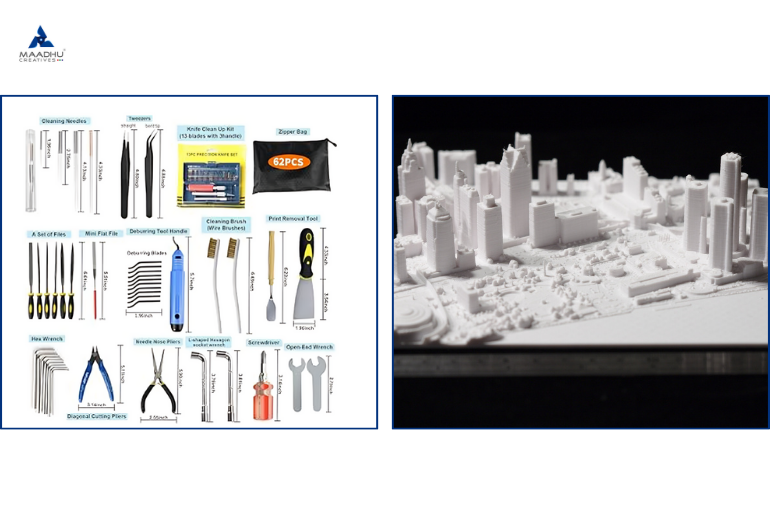
It is inspiring to build a model city considered to be an interesting task that must be done properly, choosing the necessary materials. No matter if you are building a model of a city for a hobby or for professional city planning, choosing the suitable material will be easier and the process, in general, would be more entertaining.
Materials
Some fundamentals that can be used are as follows: It is advisable to use cardboard and construct model cities out of Styrofoam for laying the base of the city model because they can easily be sliced and carved. These materials can also be used in the form of wooden stands to provide a firm foundation, especially for large models.
For the actual modeling process, you will require materials such as plastic, clay, and paint, among other things. The buildings and other constructions can be made out of plastic sheets or strips, while clay is used for fine details. Paint will help to bring vibrant colors and a realistic touch to your city.
Note: The materials generally used for our model are:
- Base: Marine ply
- Model: Acrylic, 3D print technology, ABS rod, HIP, and paint
Tools
The instruments required are cutting tools, adhesive, and paintbrushes. You’ll need a sharp utility knife or craft knife to cut your base and model materials accurately. A strong glue is essential for securely bonding various elements of your model. For painting, you’ll need small paintbrushes to reach the tiny details of your figures, as well as larger brushes for achieving a professional finish.
Sourcing
These materials and many more can be purchased in any crafts store or on the internet. Retail stores that sell model making items will contain all the items that you would require in creating your city model. In the case of certain specialized composites, certain types of plastic, or very small items, internet vendors and niche vendors are recommended.
Hence, compiling all essentials and relevant tools you create the best possible environment and background to construct your scale city model. When everything is set, you and your friends will be geared up for the development of your miniature city!
4.Building the Base and Terrain
Accumulation and sculpting are the elementary stages in approaching the model city-state. These are some of the basic foundational tasks that are very important if one wants to come up with a model that not only is good in as far as aesthetics are concerned but also when it comes to longevity.
Foundation Construction
Start with leveling a good foundation for such a city to be developed. This is the supporting foundation that will provide the mobile platform to hold all the elements of the interface, so it needs to be solid. Such items as a cardboard or a foam board will be suitable in this case. Trim the base to the required dimensions, it has to accommodate the entire city layout at least.
Once the base is prepared, work on the form of the terrain. Some of the common land features which can be modeled include hills, valleys, rivers, lakes among others Through foam boarding, or sculpting clay, different land features like hills, valleys, and water bodies can be made. To make hills, arrange the foam or clay one on top of the other and spread it to provide the natural look. For valleys, the layouts should be indented or impressed into the material to produce low points. Glossy paint or clear resin can also be used to represent water components in the model since water reflects.
Surface Detailing
Start with the base and terrain and once those are in, add in more intricate details to create your model city. Construct roads and paths for movement by the models by using thin strips of cards or painted plastics. For green areas such as the park use green painted foam or felt. It is also possible to put tiny trees and shrubs to make your model as realistic as possible.
Other attributes like sidewalk, street light and benches should also be incorporated in the maps. Such modifications create a more realistic and exciting experience of your city model.
Thus, starting from building a stable and strong base and adding the finest details to the terrain, you have created the best environment for designing a gorgeous and realistic city-scale map. By doing all of these, you will find it easier to erect a model city that not only looks good but is also well planned.
5.Constructing Buildings and Infrastructure 3d City Model
Designing the structures and the framework of a miniature city model is where you see the spirit of your idea. This stage requires a lot of strategy to ensure that every little bit of the city you are designing appears as though it was designed as a unit.
Building Techniques
In constructing buildings for the model you are creating of the city, there are various possibilities. Cardboard is such a common material because it is easy to sculpt and can easily be trimmed giving it that basic form. Hence, for more detailed and durable buildings, it cannot be overemphasized that plastic is an ideal material. It can be cut and moulded as to strict forms; it has somewhat more detailing than cardboard as a material does. If accuracy is critical, and elaborate designs are required, then using 3D printing is perfect. This technology enables you to make various structures and fine working aspects, which cannot be made with normal building methods.
One of the things you need to ensure is that the buildings that you are constructing in your city model have the right size. Take accurate dimensions of each building bearing in mind the scale of the model that you wish to make. Proper scaling makes your simulated city to be more realistic and the individual structures to blend in appropriately due to continuity in the scale used.
Infrastructure
Extension is the primary way to turn your city model from a mere concept into a fully functional and attractive piece of work. Commence with establishing roads as well as the paths that go along the compound. Cardboard painted or thin hard plastic sheets can be useful in this regard. To unify separate territories of your city, include bridges and railways. Plastic is perfect for these parts and, possibly, 3D printing can offer more intricate solutions.
This category of building components should include items such as streetlights, traffic signals, benches, etc. These small differences make your model more realistic. Focus on cleaning the external texture and colors to make it appealing and to blend with the overall appearance of the Heinz company’s logo.
The structures which are created by placing considerable attention to details will enable you develop a city-like setting that will appear more real and aesthetic. Everything should complement your general design and should show the effort and creativity that went into it.
6.Painting and Detailing Your Scale City Model
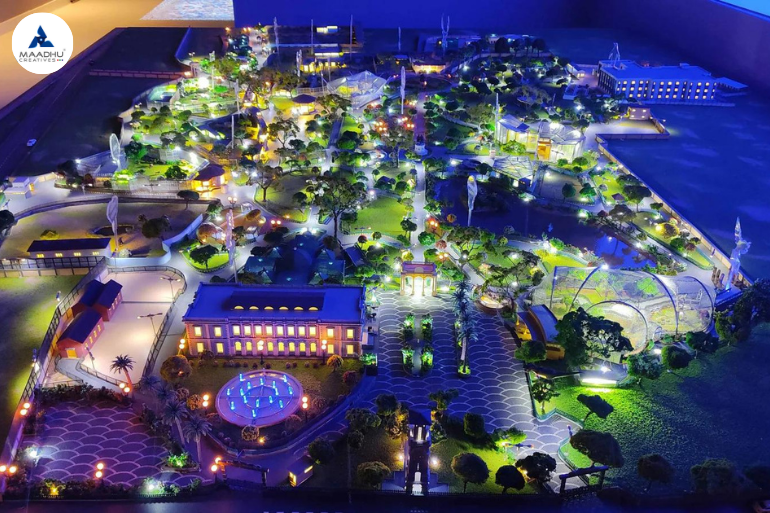
After you’ve built the basic framework for your model of a small city, then the next step is to paint and to make further enhancements. This a very exciting part of the game where you get your ideal model and start to develop it and give it persona.
Painting Techniques
Start with the base coats that will establish the primaries of your city. Select colors in concordance with the building and the general environment of your model. For instance, grays or neutral colours will be appropriate for depicting structures in the urban setting whilst greens for the parks. Sweep these base coats on quite thinly in order to get a good base to work on.
When the base colours are fully dry one can then put detailed work for the objective of making it more realistic. When painting difficult areas such as windows, doors, and other inserted parts, it is appropriate to use a small brush. Incidentally, such a look can be achieved with the help of weathering—from a spray gun, gently rub over such tones of gray or brown to create the appearance of dust and rust on roads and structures.
Detail Work
Here there are some examples of how the real magic occurs with the small details. Put tiny people, cars and other signs in your model adding the overall atmosphere of a big city. These details make the event of interacting with your city model more fun and realistic.
Other details such as street lamps, benches, and trees should also also enhance the appearance of your model. Make sure these details are to scale and placed in clear sight so that they can easily blend in the over-all feel of the city.
When you properly apply the paint and add crisp touches on the accessories, you’ll be amazed at the beauty and alive feel that is brought out in the city model. These elements are what sets your model apart and is a testimony to your ideas and hard work put into it.
7.Assembling and Finalizing Your Miniature City Model
Fine tuning your city model is where all the work you have been doing pays off. This stage is about being precise on how all the relations and concerns are fitted and also making sure that it looks good.
Assembly
Firstly, fasten all the components to the base as a way of commencing the jigsaw process. This includes structures, roads, parks and any other components that you maybe have included. Ensure that each of the elements put in place has a good seating and that they are well fixed in place. Make sure that all the objects relate to one another harmoniously and are of the right size. Proper orientation is important in this respect to give your miniature city a convincing and well built look.
Final Touches
After preparing all the aspects, stop for a while and analyze your model. Search for any discrepancies that can be potentially reviewed or modified. This could, for example, mean the application of new parts where necessary, mortising, screwing, sanding, and painting, among others.
Place on any final touches that may improve the appearance of the created layout. This could, for instance, be small people, more trees, or some outdoor items such as street lamps or vases. Such modifications resemble minor changes, yet they have a rather significant impact on the level of interest and realism of the utilized city model.
Thus, when you are carefully selecting and sorting out the final stages of the model you made of the city, it will be both a representation of your intentions and vision and a great looking piece of work.
8.Displaying and Maintaining Your Urban City Model
And when you have developed your small-scale model of a city, construction, and dedicated resources and time in building it you have to display it well and maintain it in the best ways possible.
Display Tips
Remember, to effectively use your city model, you should put it in a location that is most advantageous concerning visibility of the model details and protection of the model. A display case is ideal as it shields the model from Damp and moisture, and from accidental damages and adjustments while those who are interested can view it as a single glance. If a case isn’t feasible, a dedicated shelf with good light should do the trick as well. This is true because; lighting complements the curves of the model and also the vibrant colors used in the model will be brighter and therefore, attractive to the eye.
Maintenance
As with any endeavour in existence, good care has to be exercised in order to maintain your model in its tip-top shape. Tightly cover it from getting in contact with dirt by lightly brushing or wiping with a feather. For the small damages, employ glue or paint in touch to repair the problems as and when they are noted.
If the changes are to be made to the design where new elements are to be incorporated or the existing ones are to be modified, then it should be done carefully to retain the essence of the first design. This goes a long way in ensuring that your city model as well developed and constructed in an orderly manner.
With these guidelines of exhibiting and preserving your city model in mind, you will not only be able to maintain it being an aesthetic and fun piece for years to come.
Conclusion
Creating a model that covers the whole city is a very fascinating process, during which the elements of art and the strict adherence to the plan are intertwined. In conclusion, the generalized steps imply the following: first, you select the concept and draw your city’s plan. Then you gather all the items that you will be using and begin to mold the ground / terrain. Moving further, you will be laying constructions of buildings and infrastructure and each of them will have to be scaled to the city. Applying paint and details on the miniature city model will give the miniature city a special characteristic and the way of assembling and polishing will add both aesthetic and functionality. Remember, a proper care for the display and a proper maintenance will help to preserve the look of your model for many years.
It is our hope you start a city model project and start with suggestions provided in this article. Returning the thoughts to reality or creating something that has never been created before is truly virtual with no limitations at all. We would be glad if you share your photos, experiences or any questions regarding the lesson in comment section. This way your work can be beneficial, it can act as reference for others and so aid the expansion of the city model fan base.


